Shrimp gnocchi in white wine-infused sauce is one quick and elegant dish. It features soft potato dumplings, tender shrimp, and a creamy yet delicate sauce. Ready in about 30 minutes, it's a great weeknight treat. Shall we?
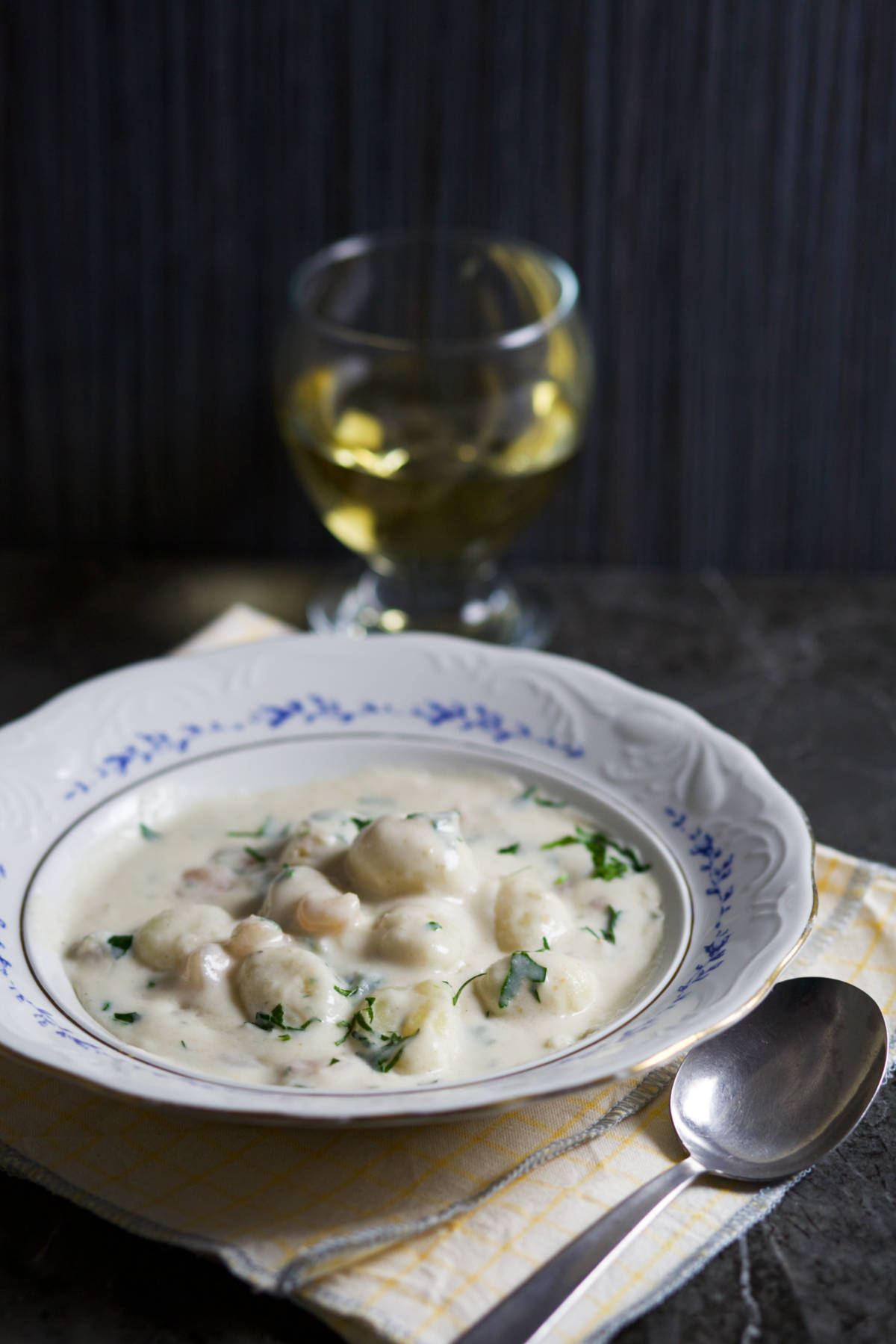
Jump to:
Background
The Balkan region, especially its Adriatic coast, is known for great gnocchi and seafood. Today's Dalmatian-inspired shrimp gnocchi is a delicious and quick dish you can make in less than thirty minutes.
The recipe for this dish comes from a small and busy restaurant on Pelješac peninsula (Croatia). The owners created this popular menu item with taste and speed in mind.
The dish is all about soft, pillowy gnocchi resting in a rich, white, creamy sauce. Meanwhile, wine notes in the sauce enhance shrimp, butter, and garlic flavors, bringing a touch of refinement to this comforting meal.
Shrimp gnocchi is so simple and so delicious, you'll have a hard time putting the fork (or spoon - your choice 😁) down.
Why You'll Love This Recipe
- High quality! This dish is not only restaurant-quality, it's literally the recipe used in one of the region's most popular restaurants.
- Ready - set - go! Done in 30 minutes means that shrimp gnocchi are perfect for busy weeknights while still providing a fantastic flavor.
- Balance of flavors! Buttery, garlicky, and with a hint of tang from the white wine, all coming together to delight your tastebuds in one meal.
Ingredients
Here are the ingredients you need to make this perfect gnocchi with shrimp in a creamy, white wine sauce:
- Gnocchi. Store-bought or homemade.
- Shrimp. Frozen or fresh, small to medium, peeled and devined.
- Onion. Yellow, red, or white.
- White wine. A dry white like Pinot Grigio, Sauvignon Blanc, or Chardonnay work best. Avoid overly sweet wines.
- Olive oil.
- Garlic.
- Heavy cream. Substitute with half and half plus butter, or milk and butter.
- Seasonings. Salt and pepper.
- Parsley. Fresh herbs and cheese for garnish and a final flavor boost.
- Breadcrumbs. Regular. Avoid panko.
Instructions
Follow these steps to create the perfect shrimp gnocchi:
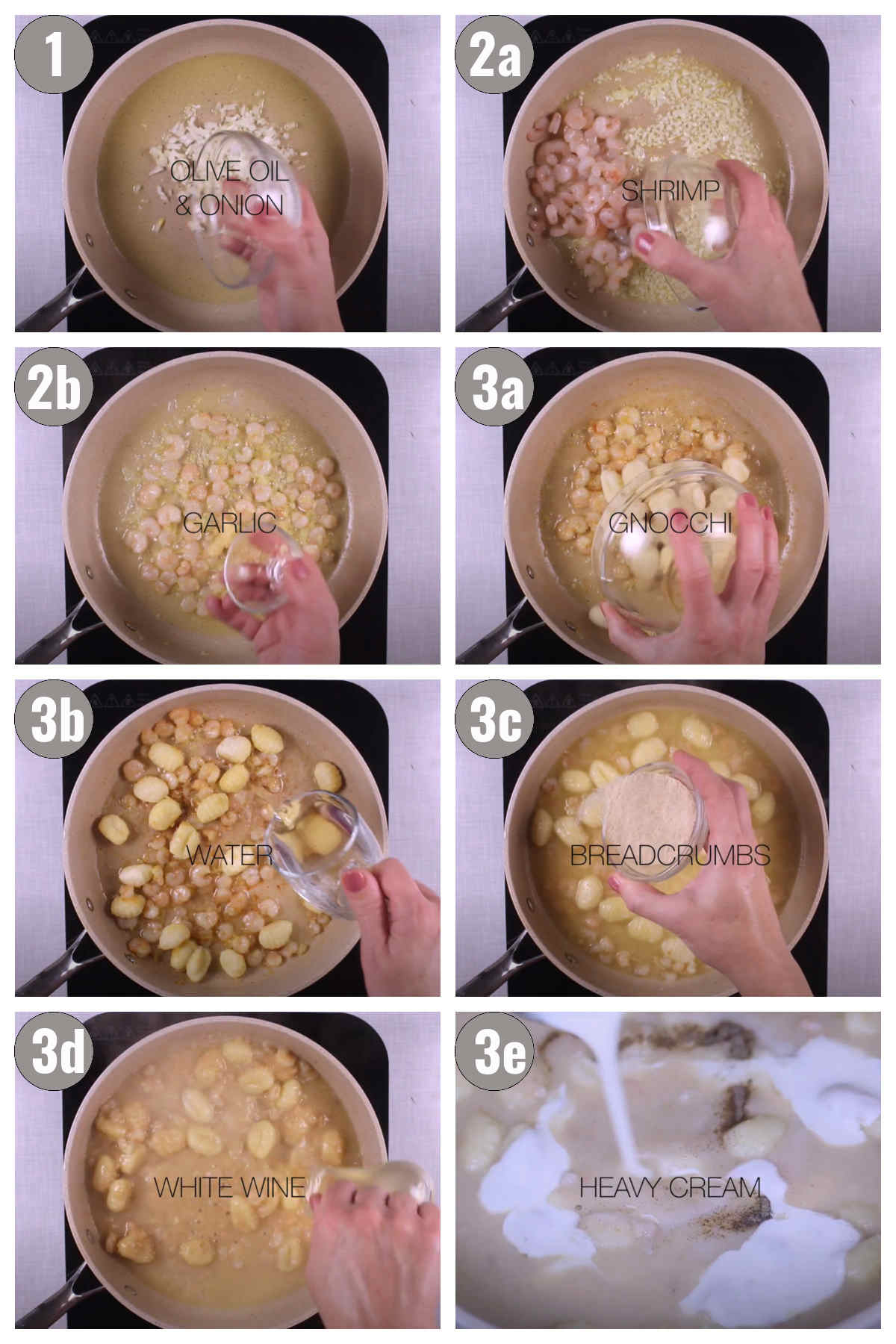
Step 1. Heat oil. Add onion. Sauté and stir.
Step 2. Add shrimp. Sauté. Add garlic. Sauté.
Step 3. Add gnocchi and water. Sauté. Add breadcrumbs, wine, seasonings, and heavy cream. Sauté.
Step 4. (Not pictured). Garnish with parsley.
Variations
Here are a few variations of shrimp gnocchi:
- Spicy twist. Add a pinch of red pepper flakes to bring up the heat.
- Seafood swap. Substitute shrimp with scallops for a different take on the same dish.
- Gnocchi alternative. Toss in penne or fusilli instead and make it a pasta night.
Handling
- Serving. Serve immediately with a slice of homemade bread, uštipci, and pair with a dry white wine.
- Storing. The dish is best consumed on the same day it's made, preferably within a short time of being made. (Gnocchi tends to absorb the sauce, while shrimp are volatile.)
Expert Tips
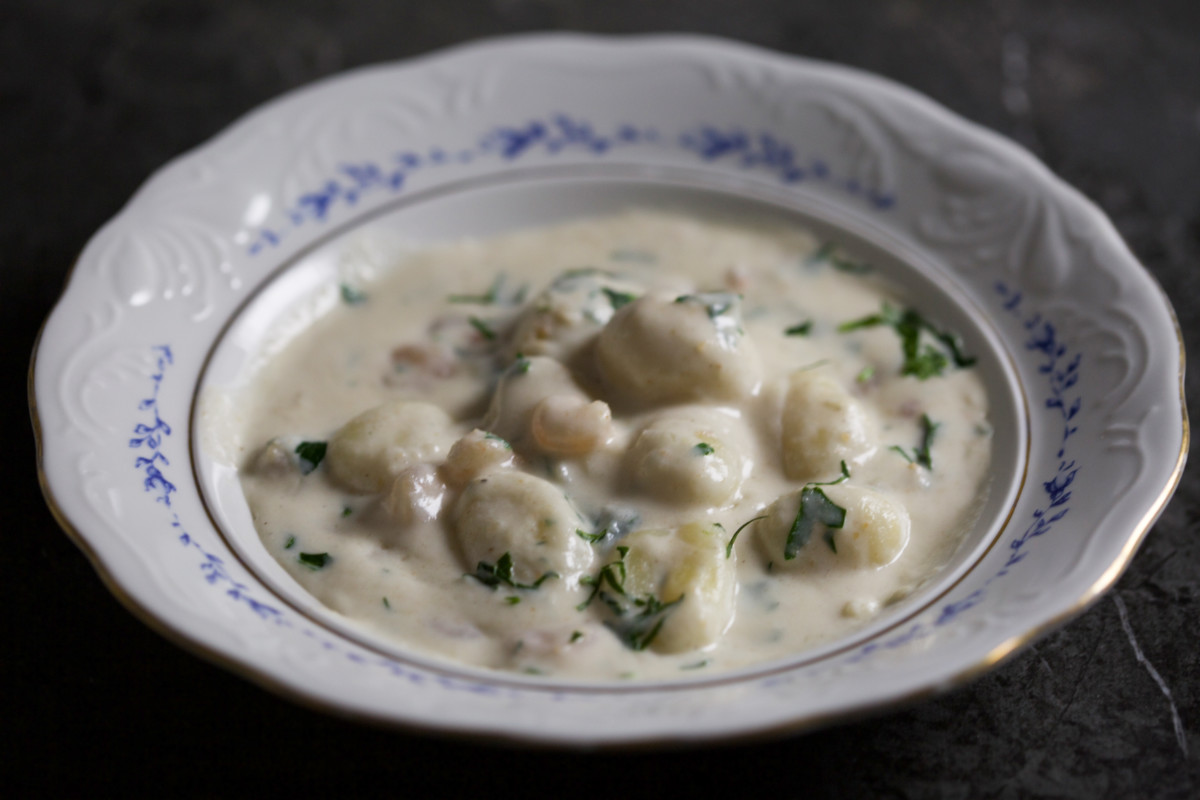
- Don’t overcook gnocchi! Gnocchi need to cook for a few minutes tops! Anything longer than that and they become tough and chewy.
- Add a touch of acid. A few drops of lemon juice at the end enhances the flavors and cuts through the richness of the sauce.
- Serve immediately! Shrimp gnocchi tastes best right after it's made. Serve it right away for the best flavor.
Recipe FAQs
Absolutely! Our shrimp gnocchi is an easy, 30-minute recipe. There is no need to work on everything from scratch when frozen ingredients will do just fine.
Just thaw and pat dry shrimp immediately before cooking and you're good to go.
Seafood recipes, including our shrimp gnocchi, are best prepared with dry white wines. We are partial to Chardonnay and Sauvignon Blanc.
No. Our recipe is simple and quick and you get a restaurant-inspired dish on your table in 30 minutes.
We've simplified the steps and ingredients so much that there is no excuse for not making it the same day you plan to eat it. Shrimp and gnocchi are both volatile ingredients best consumed right after cooking.
Thoughts?
If you make today's creamy shrimp gnocchi in white wine sauce and like it, please consider leaving a ⭐️⭐️⭐️⭐️⭐️ (5-star) rating. This will help others find the recipe more easily!
You can also leave a comment, I read EVERY one! Finally, if IG is more your thing, consider tagging us @balkanlunchbox.
Prijatno, Dobar Tek, and Bon Appetit!
(P.S. We're grateful to Snježa, Toni, and Toni's grandmother for sharing the recipe with us!)
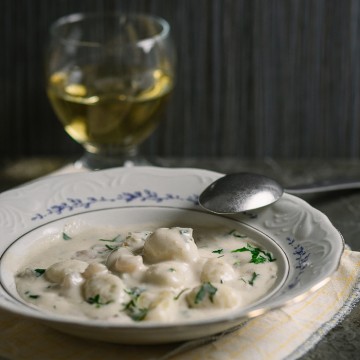
Shrimp Gnocchi in Creamy White Wine Sauce
Ingredients
- 1-2 tablespoons olive oil
- 1 onion small, minced
- 20-22 ounces shrimp frozen or fresh
- 2-3 garlic cloves minced
- 10-12 ounces potato gnocchi frozen
- 1.75 cups water
- 1-2 ounces breadcrumbs
- 1.25 ounces dry white wine Pinot Grigio, Chardonnay, Sauvignon Blanc
- salt and pepper to taste
- 2 cups heavy cream
- 1-2 ounces fresh parsley minced
Instructions
- In a deep, large pan (or wok) heat olive oil on medium for 2-3 minutes. Add onion. Sauté and stir until translucent, about 3-4 minutes.
- While stirring continuously, add shrimp and sauté 4-5 minutes. Add garlic and continue sautéing and stirring another 3-4 minutes.
- Add gnocchi and water. Stir in breadcrumbs, wine, seasonings, heavy cream, and parsley. Sauté and stir for 3-4 minutes.
- Serve immediately with a slice of homemade bread, uštipci, and pair with a dry white wine. The dish is best consumed on the same day it's made, preferably within a short time of being made. (Gnocchi tends to absorb the sauce, while shrimp are volatile.) Don't store, reheat, or freeze.
Video
Notes
- Nutritional Information
- Dish Variations
Seafood swap. Substitute shrimp with scallops for a different take on the same dish.
Gnocchi alternative. Toss in penne or fusilli instead and make it a pasta night.

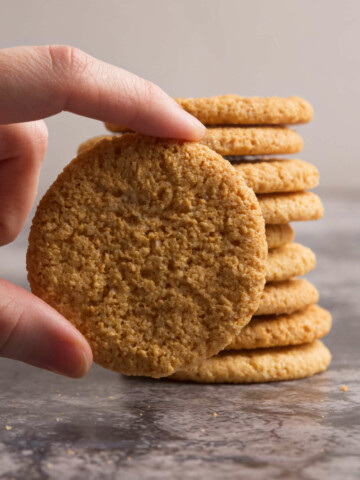
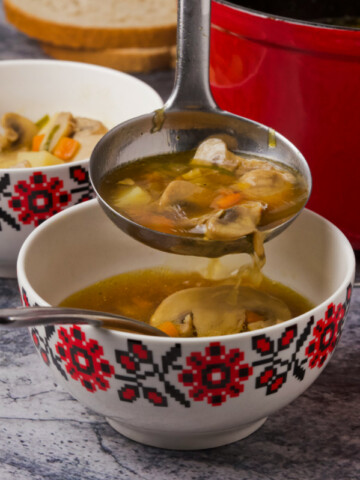
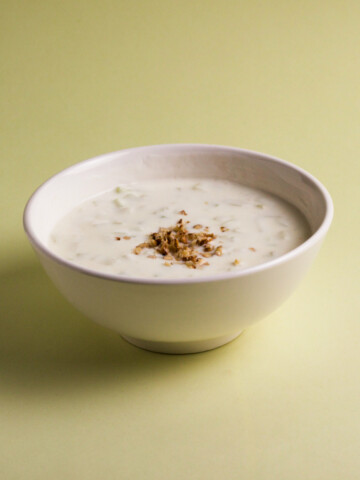
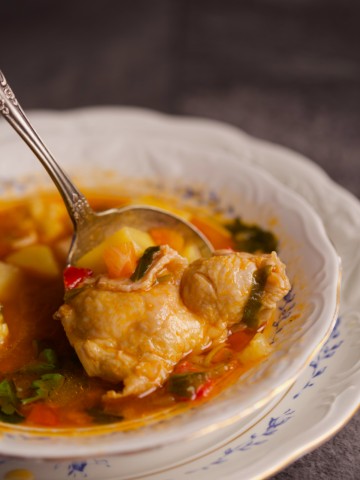

Leave a Reply